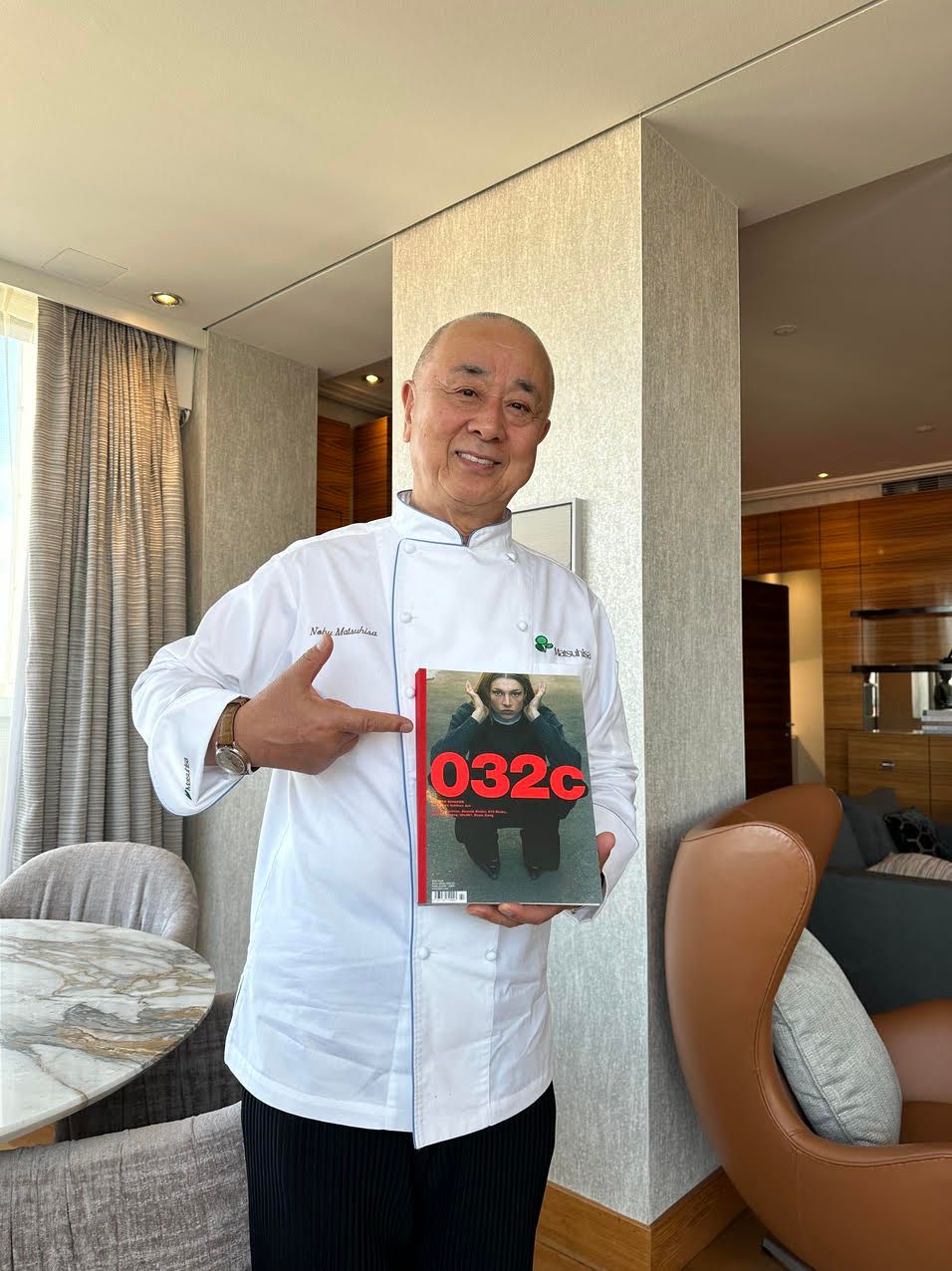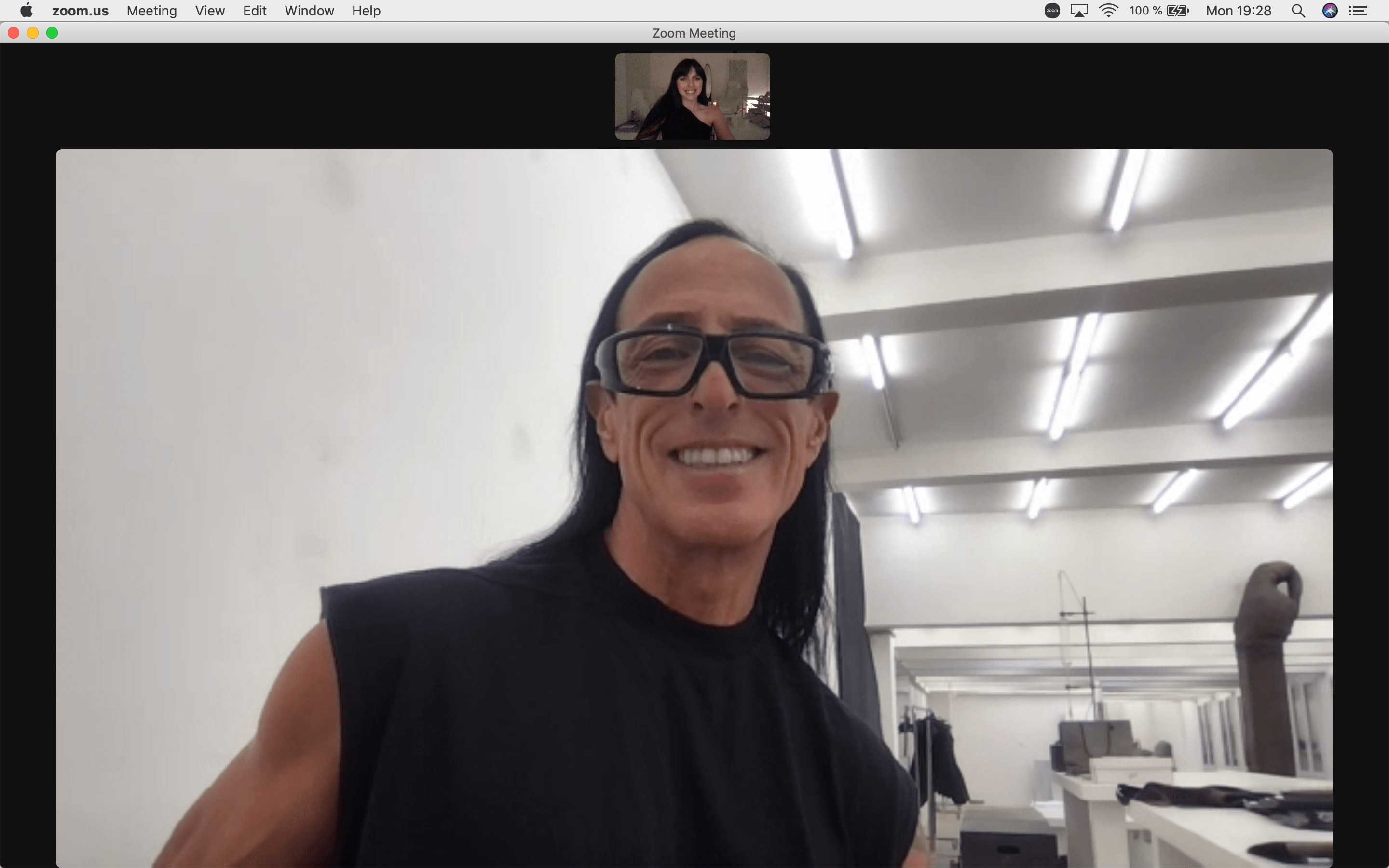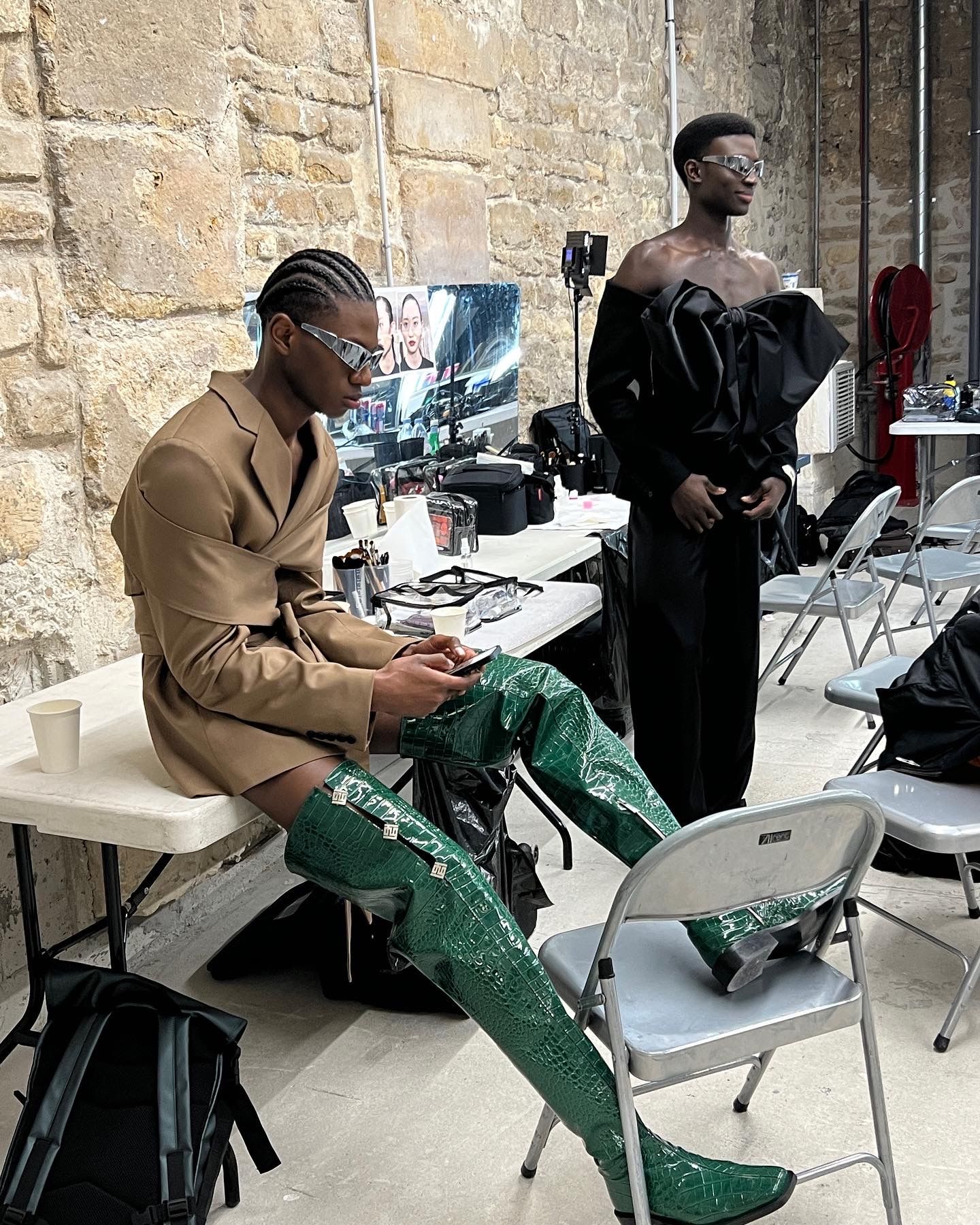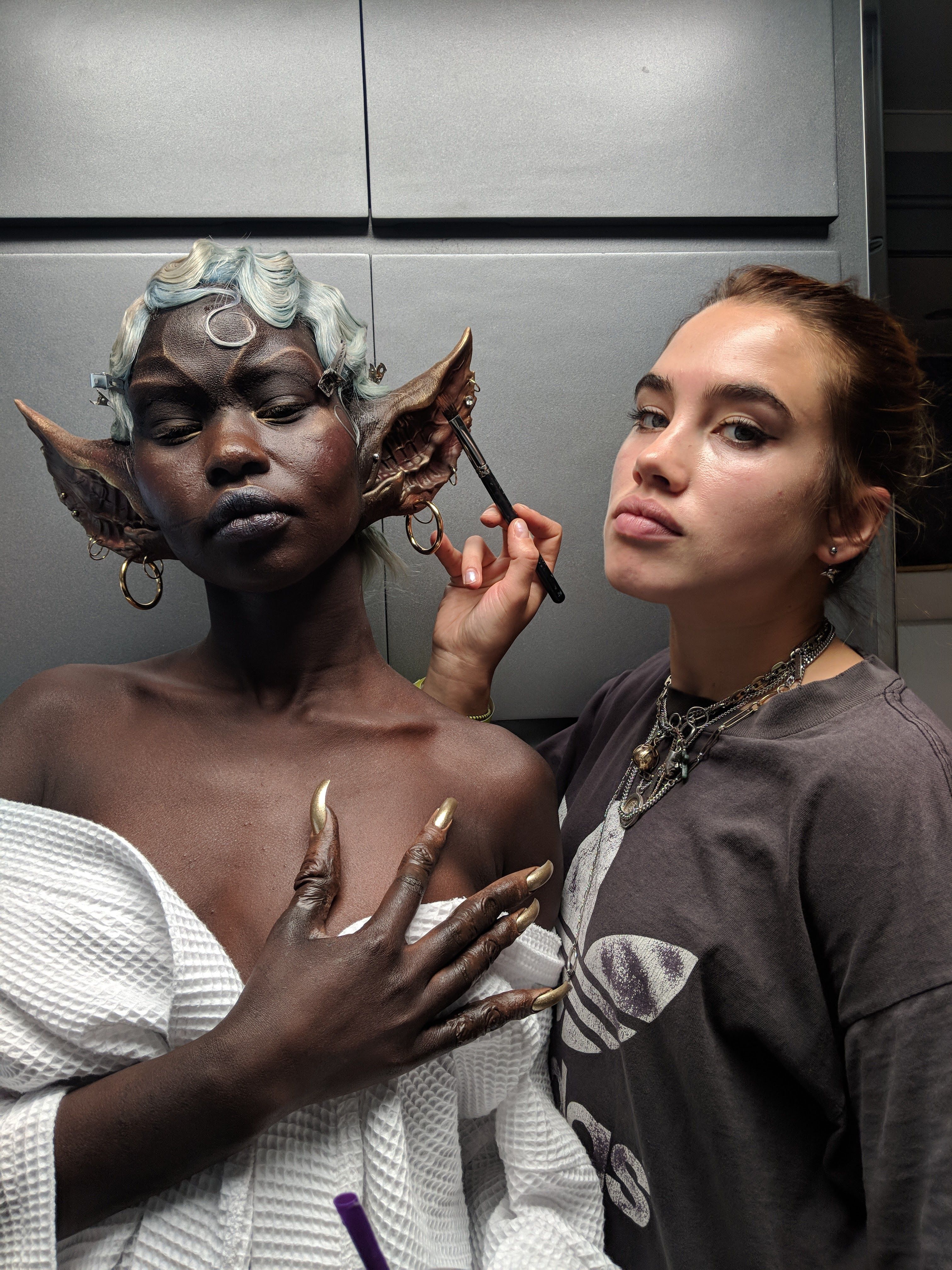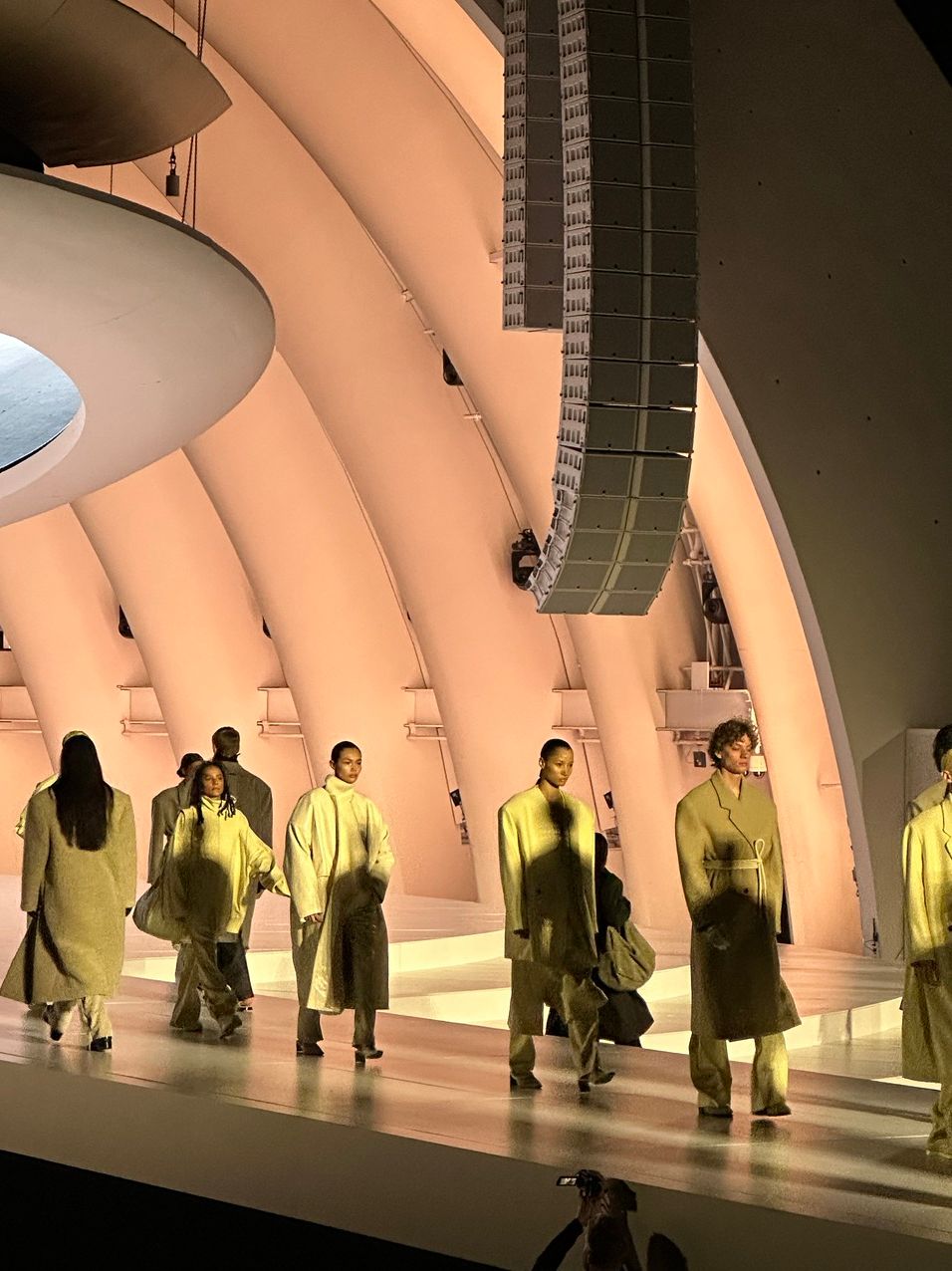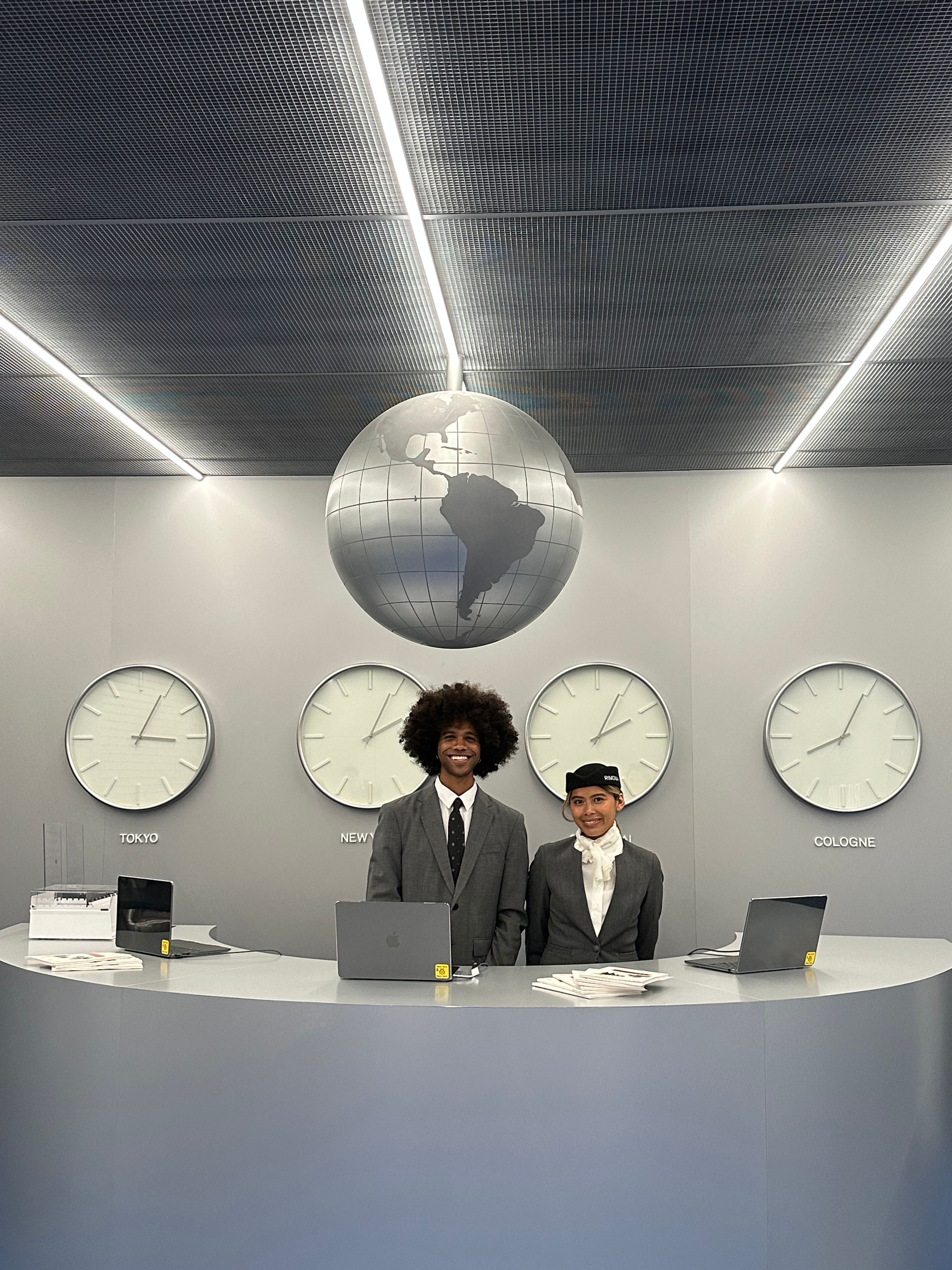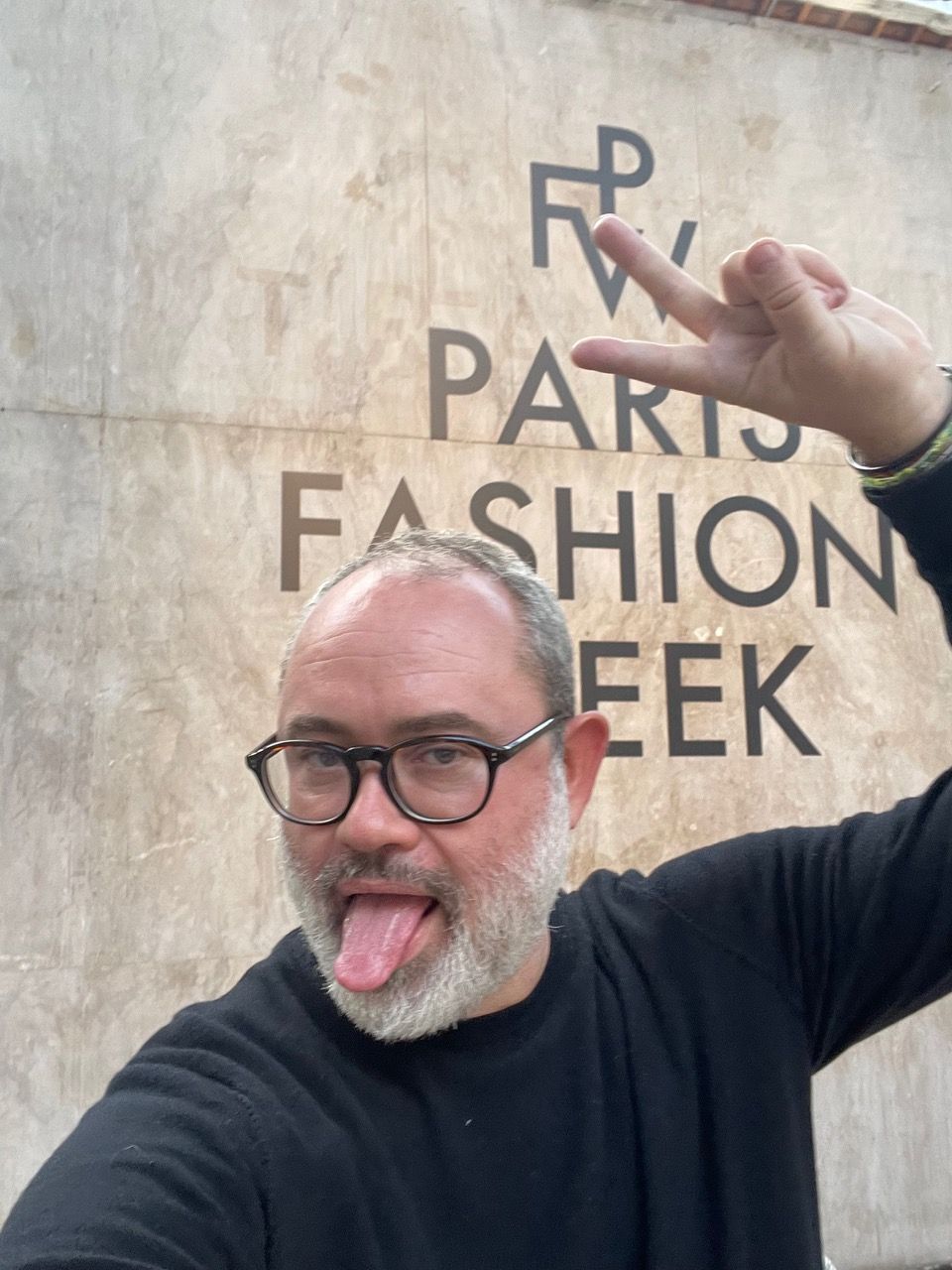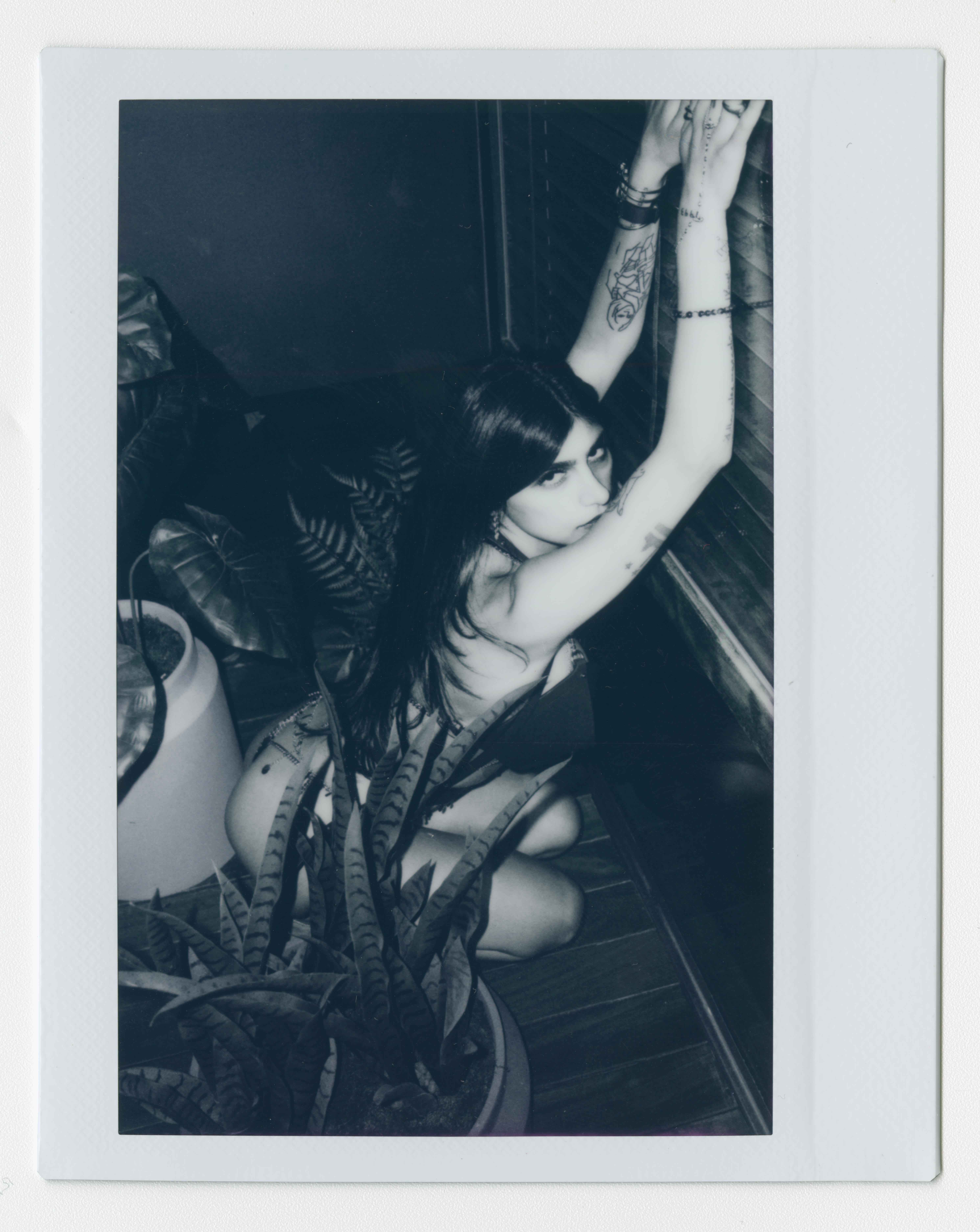Brenda’s Business with AMINA MUADDI
|Brenda Weischer
When I talk to peers about Amina Muaddi, it often surprises me how little they know about her journey to a multi-million-dollar shoe empire. It might be her looks or that a stiletto doesn’t exactly evoke visuals of struggle in our minds.
Amina Muaddi, the brand, is only five years old, but Amina Muaddi, the founder and designer, has worked in fashion for the last decade. We sit down before her Italian-style summer break and discuss shoe production, sales strategy, wholesale business, and dictating a male-dominated market.
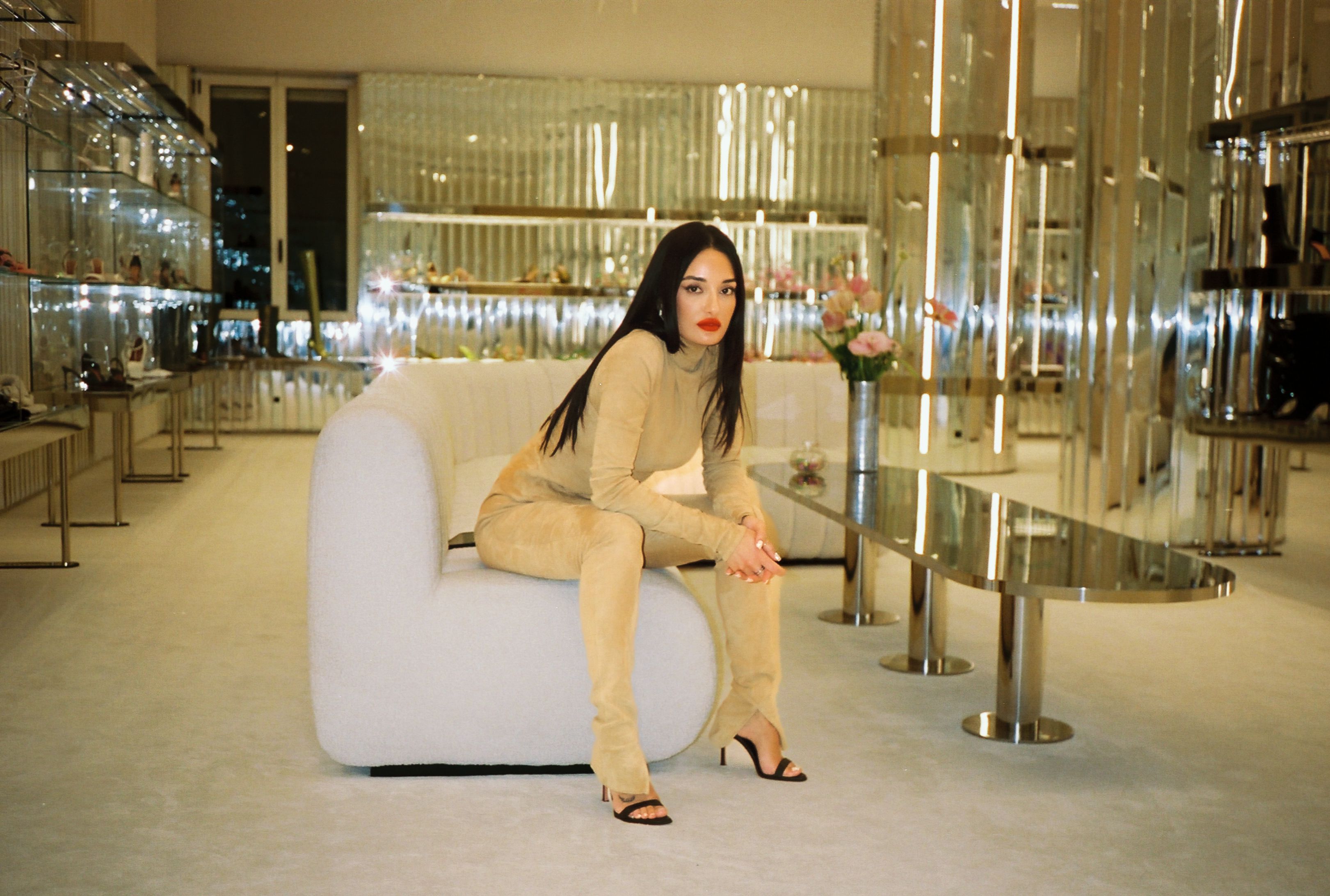
BRENDA WEISCHER: I have one funny thing to start off with. I think people have this perception of you just coming out with a brand, and it being super successful. But they forget all the stuff you’ve done before. Being in magazines, then your first shoe brand Oscar Tiye. I dug in my email folder, and I found an email I sent to you in 2015. I was an influencer with, like, 30,000 followers, and I messaged Oscar Tiye asking if you do influencer gifting.
AMINA MUADDI: Oh, which model did you request?
BW: I don’t think I specified. I was more like, “Hi, what’s up? Do you do giftings?” I don’t think I ever got a response. [Laughs]
AM: Probably because I had one employee doing everything. But I appreciate that you knew about it. I feel like many people didn’t outside the Italian market, as the brand was based in Italy. Sometimes some of my clients say they’ve been following my work since Oscar Tiye, which I appreciate a lot because that was ten years ago.
BW: Have you ever publicly spoken about why you left that brand? It still exists in some capacity, right?
AM: I didn’t want to leave, to be honest. I wanted to work it out with my business partners, but we didn’t manage to. This brand was like my baby, so obviously it’s against your instinct to leave. It was either: I was going to stay or they were going to stay. In the end, I decided to leave because they wanted to continue with their own vision. I realized we didn’t match where we wanted to take the brand. Also, we were very young. And I feel like when you’re young, you don’t know what you’re doing. It’s like a game. You take it very seriously, but you don’t know what you’re doing. And I’m still learning things to this day.
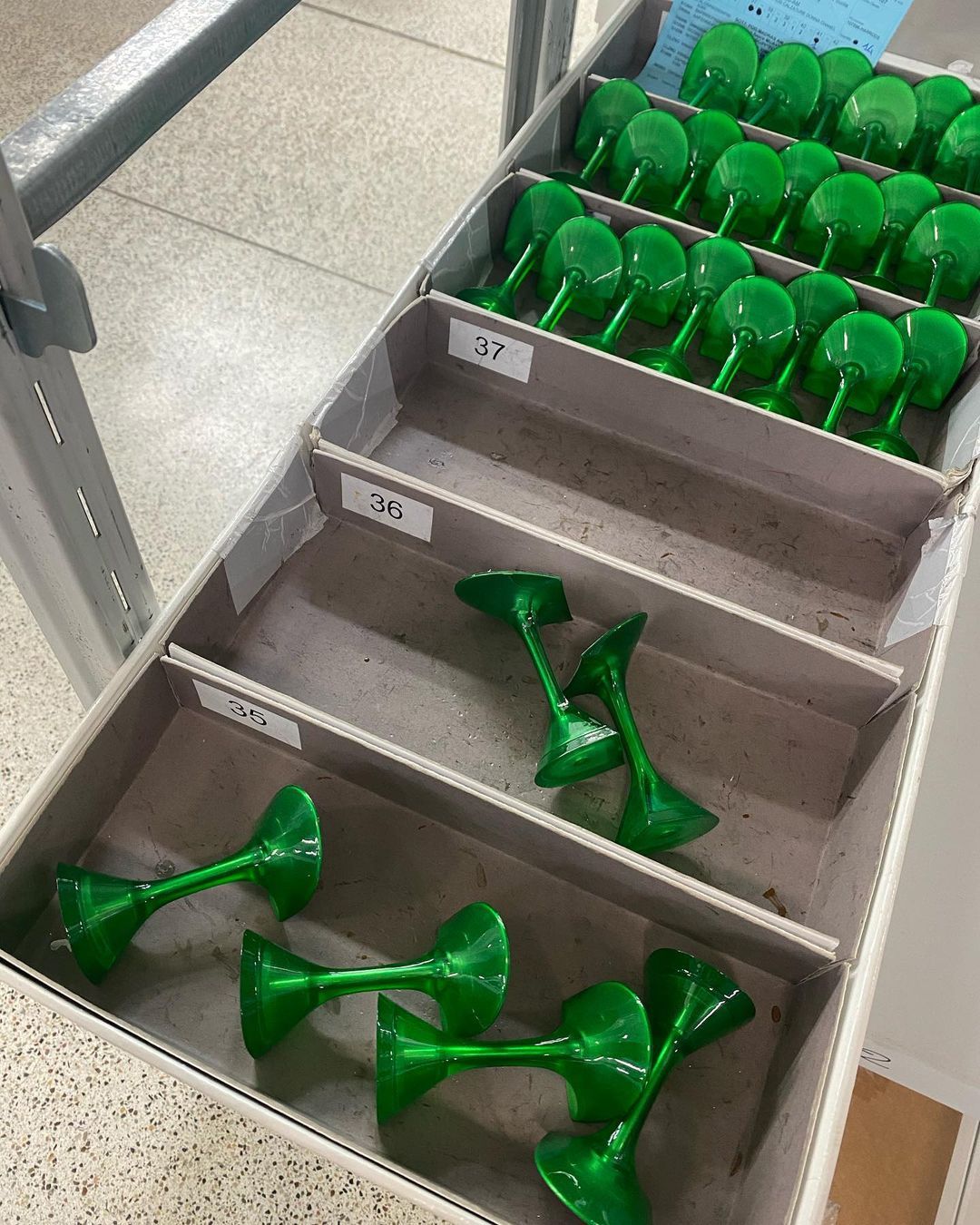
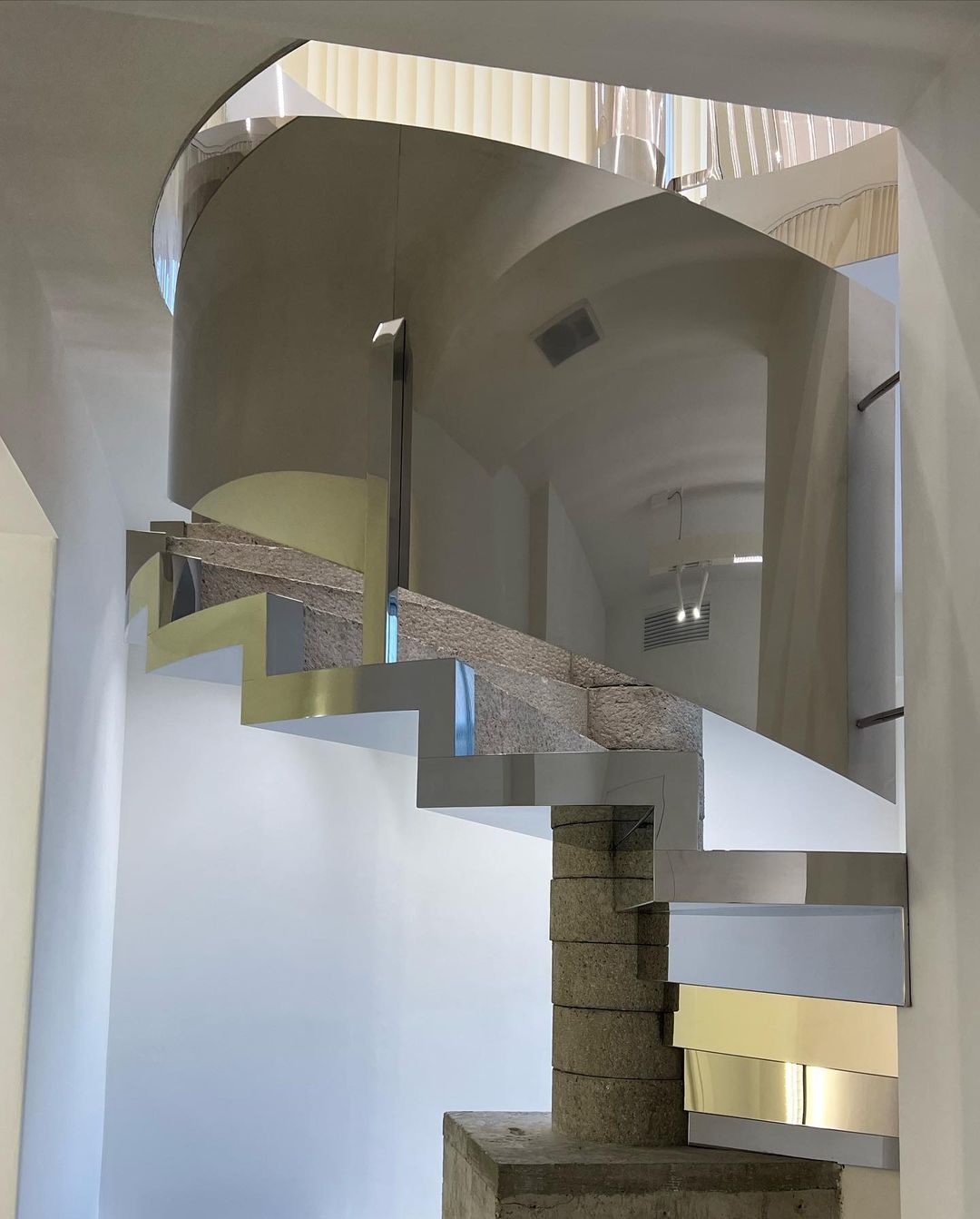
BW: And the launch of Amina Muaddi was in 2018. It’s crazy to me that your brand is only five years old. People kind of brush over your story “and then she founded her namesake label.” Did you have investors, did you raise capital? I tried to google “Amina Muaddi CEO” and nothing comes up!
AM: First of all, I feel as a company, having a CEO is a step that can come later. When you’re small as a brand, it’s not like you need or can afford the CEO unless the CEO is a founder. And in my case, I wanted to start on my own.
When I left the other company, I had several options. Some of my factories wanted to offer me a licensing deal, and I had potential investors. Considering my previous experience at Oscar Tiye, the only thing I didn’t want was a partnership. Or if I had a partnership, I wanted to have a strategic one.
I decided to take a loan because I felt like I was starting from a point where I was already being sold in some of the best stores in the world. I already had the contacts; I already knew the factories. I had been working my ass off for the past six years to build what I had built. So, it wasn’t the same person starting six years before that, who didn’t know anybody, didn’t have any contacts, didn’t have any experience. I had the experience and the motivation and the knowledge and also the possibility to do this on my own.
It was a huge risk because it might not have worked out. This type of business, you have no idea how it’s going to work, especially because it’s a creative product. Until you put the product out, you have no clue how people will react to it. And with my other brand, we struggled for six years to be profitable. We had so many struggles, and it was so hard. I hadn’t seen the light at the end of the tunnel yet. But it is the only thing I know how to do and that I love doing. Plus, I had already been working with [Alexandre] Vauthier for five years, so I was half doing that and half Oscar Tiye.
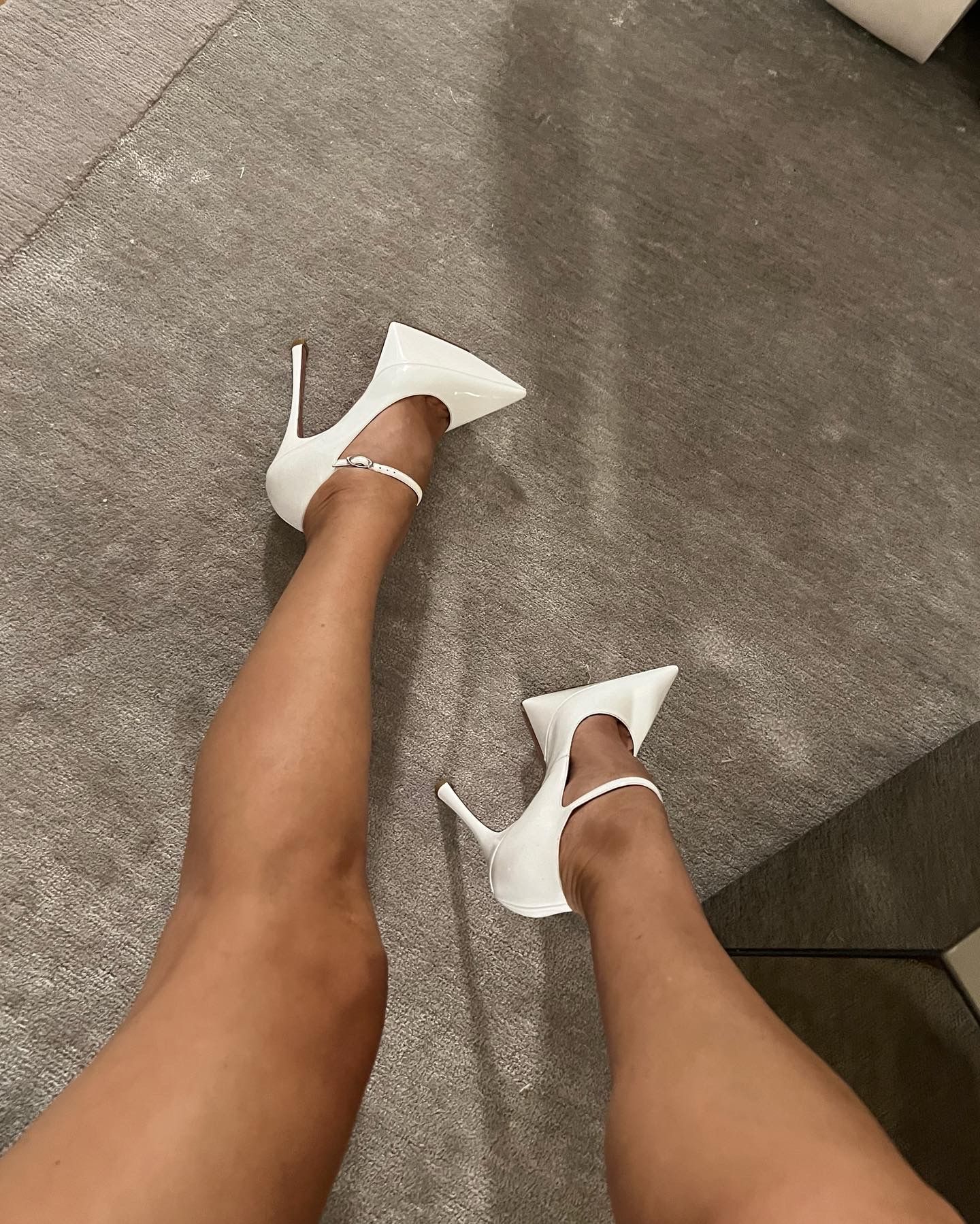
BW: From an outsider’s perspective, shoe business is its own entity. It has less players in comparison to how many handbag brands are out there. It’s less crowded, but for a reason. Molding, not being able to design from scratch like other products, no one size fits all, the factories.
AM: Yes, it’s different from making any other product. If you want your own design and don’t take existing molds from the factories, it’s a very costly thing to develop. A high heel shoe can be 40 to 50 components; every component is separate, and most from a different supplier. At my first brand, we didn’t have a factory, so we would go to each supplier with a plastic bag, take the component, and put everything in the bag. It was like a puzzle. By the time you had all the components in a bag, you would go to someone else to assemble the shoe. And that is only a sample. The production of a finished product on a bigger scale is a whole different story.
It’s like a quite expensive business to start. When I hear, “Oh, I started a shoe brand with 5000 euros,” I think, sure it’s possible, but not if you want to build a luxury business. So that’s why most shoe designers either go work for houses or get a licensing deal. It’s a constant investment. In order to create novelty, you have to invest in these molds, in these patterns, in these heel molds.
BW: But then these molds are entirely your own right?
AM: Yes. If you create it, they are yours. With Amina Muaddi, I made everything. My signature heel is registered. Of course, you can’t really register something that’s like a regular pump. There’s nothing special about it. But my signature heels, buckles, and accessories are registered. That doesn’t stop people from copying them.
BW: What are your biggest markets for the brand right now?
AM: Europe, USA, and the Middle East. USA is my biggest market as a country because there are many states. UK is my biggest “European” market, even though it’s no longer in the EU.
BW: And with shoes, are there also the regular fashion seasons?
AM: I would say I am my own calendar. We keep seasonality in terms of coming out with products several times a year, drops. I never present the collection to the press, so I never did that cycle of lookbook, press release, and then only releasing months later. Since I started my business, it was a see now, buy now type of business. And actually, initially, I was met with quite a lot of hostility in terms of press agencies wanting to represent me because of that. That’s why I decided to build in house PR. The agencies didn’t fully get how I operated, presenting something when it’s actually available. They would say: “Footwear brands present in Milan, not Paris. If you don’t show the journalists in this period, you won’t get editorials,” which is not true. Also, if you over-promote a product for six months in the media, the consumer is bored by the time it hits the stores. I want a long-lasting product that doesn’t look “last season” in six months or that is already copied before I launch. I’m still selling the shoes I made five years ago. I want every product I make to be a carryover because that’s how my mind works.
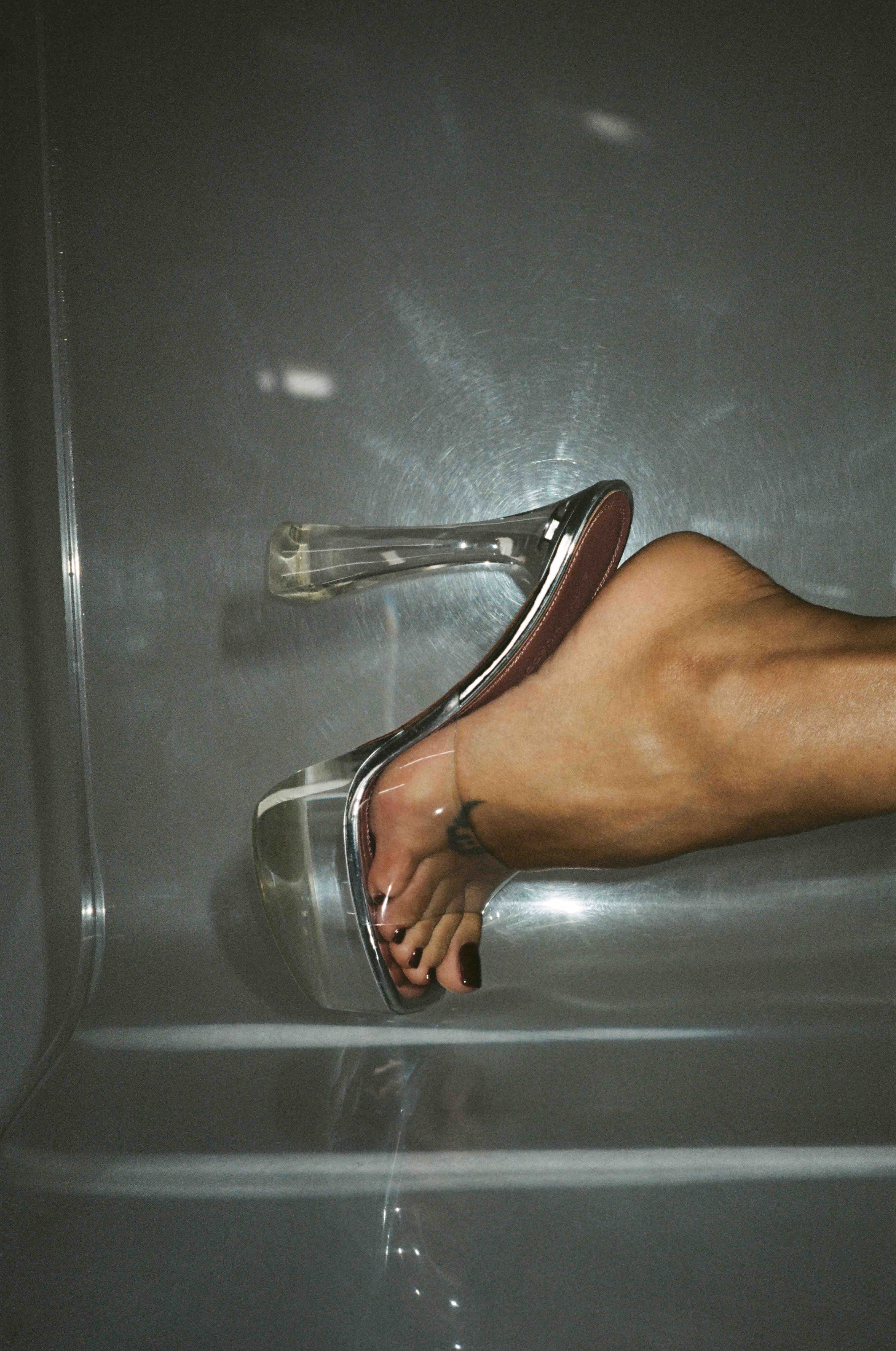

BW: You started as a purely wholesale brand, right?
AM: Yeah, because my sales agent has been with me since right at the beginning of my first brand in 2013. He was a mentor to me and still handles my wholesale business. Massimo Bonini is still family run even though it is huge now. I trust them a lot with my wholesale strategy. Massimo is a visionary, which is important because so many brands are ruined because of lack of strategy. If you are greedy and oversaturate the market with a popular item—by allowing stockists to buy way too much product, for instance—that can end up destroying your brand. Many people don’t have a long-term vision. We said no to most stockists, and we still send back orders until they do the right picks that represent the brand correctly.
BW: I think this is very helpful to young designers. Most are so desperate to get all these stockists, but if they do the wrong buys or put you on sale, you can’t do much about it.
AM: Yes, sometimes you’ll accept conditions you should never accept, such as accepting consignment. I don’t agree with consignment, I find it unacceptable because that’s one way to destroy a brand. Unless it’s like couture one of one pieces, then it’s a different thing. But when you want to help a small brand, doing consignment is saying, “Oh, I don’t believe in you and I’m not going to take any risk.” And sometimes brands do that because they’ll do anything to just be represented by one store, especially in the beginning. But it’s not fair. I set my own conditions and I only sold to the people that accepted them. But I was in a privileged position, I’m not going to lie about that.
BW: What were your other conditions when you launched? You heavily inspect their order picks, right?
AM: Yes, to see if their selections represent my vision. I also don’t let them buy as much as they want. I don’t let them buy what they want to buy because they’ll just want to buy whatever they feel is the best seller. They’re not going to represent the brand correctly, and they’re not going to represent the evolution correctly. You want to blend the new with the old. You want to create a story. I don’t see myself as a shoe brand only. I see myself as a Maison, and I will treat it that way. I think a lot of it comes down to respecting yourself and your work.
BW: Yes, I think it’s very important. It’s not only about making the stockist happy. That will dilute your brand. Boundaries are essential.
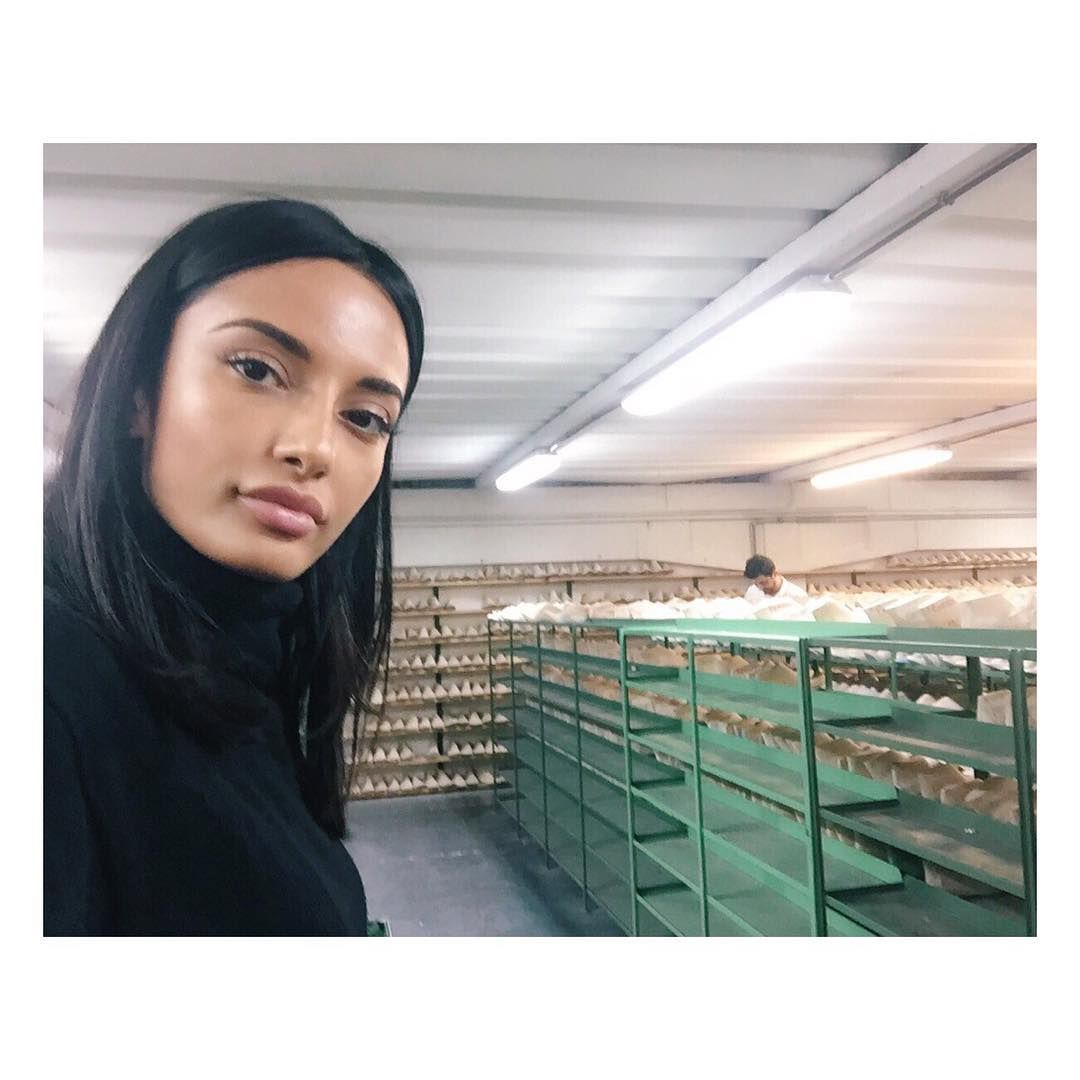
AM: I learned a lot from my mistakes at the first brand, so I feel very fortunate for all my lessons. When building Amina Muaddi, it was with my own resources. It’s different than being backed by a house or a group or an investor. You have to be very cautious with every step you take.
BW: But still, even as your brand is huge now, do you struggle with cash flow between getting orders in, producing, delivering, and then getting paid for product?
AM: Each retailer has different rules. Some retailers pay half advance and half on delivery. Some retailers pay only on delivery. When I started, it was very difficult with the conditions that we had with the factories. Factories want money in advance, but stores don’t want to pay in advance. It’s always a trap for the brand and the designer. Unless you have enough cash flow and enough capital, you’re going to struggle. We try to find agreements with the factories, with the stores, in order to be able to afford the production and not run out of money. It’s not like you get profitable right away. It takes years to become profitable.
BW: How many stockists do you have now?
AM: I think around 100. I could have 200 but that’s not the kind of growth I want. It’s better to grow your quantities with your wholesale partners rather than taking in too many retailers. There are 150 to 200 SKUs per season, but a lot of them carryover. Handbags are coming this fall after I launched the evening bags in 2020.
BW: I want to touch on communication. You are your own communication channel. There are very, very few advertisements, but a lot of celebrity placements.
AM: When I started, I didn’t have the finances to invest in communication. My only way of communicating was me. But now I want a 360 approach, and I would never use myself in campaigns. The brand has to be able to stand on its own. I’m my first ambassador, but I don’t want to be more than that. In terms of celebrity, the scarcity of the product at the beginning really helped. Everybody wanted to get their hands on it. Stylists reached out. When Jahleel [Weaver] reached out for Rihanna, he didn’t ask for shoes, he was more congratulating me on the brand and said that he bought her shoes on Net-a-Porter. He’s the sweetest, most polite person. So, all these relationships are very organic.
BW: And now you finally started your own e-commerce. You waited for a long time.
AM: To begin with, it’s great to be associated and be sold through the best retailers in the world. If I were to start selling my own e-commerce first, I wouldn’t have the same visibility. I wanted to be established first, have consumers know my product, my vision, and what I stand for. When I created my e-commerce and my website, I wanted it to be a luxury online experience. Perfect images, perfect user experience, perfect customer service. It takes a lot of resources. I wanted to have my investment ready to get the full e-commerce experience I wanted to offer. Number two, you need staff. You need customer care, you need an e-commerce manager, you need an agency, you need someone handling the software, you need your website not to crash, you need, in case the website does crash, to have a back office. Handling it. You need logistics, you need the warehouse, you need stock. I wanted to create the experience that a client who buys my shoes deserves. As a client myself, if I were to buy something, and I wouldn’t be assisted afterwards, I would have a problem with that.
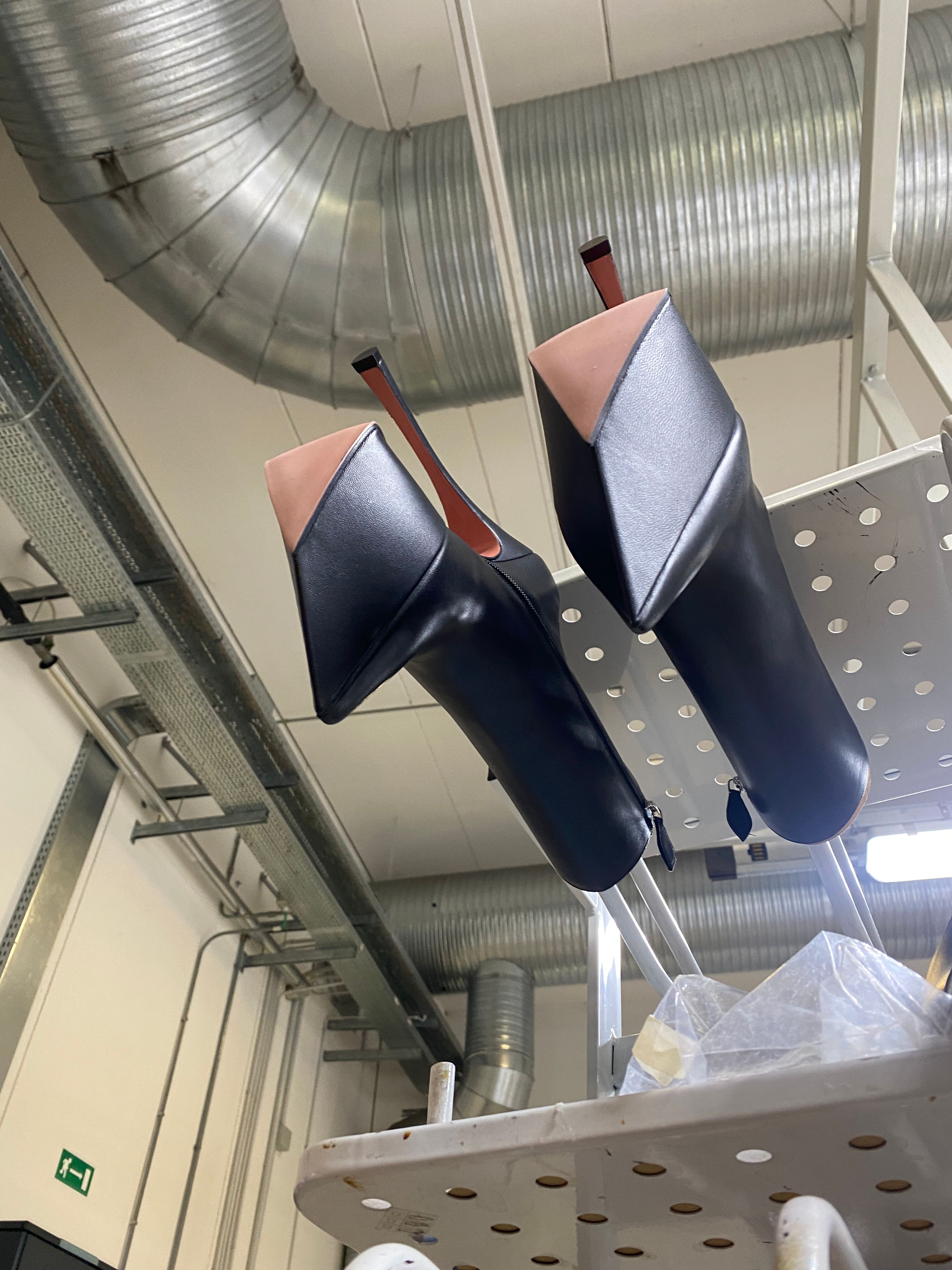
BW: I wanted to also touch on your public image. I feel like a lot of times with attractive women who are in business, through a mix of intimidation and sometimes jealousy, people have this way of negatively perceiving your respect for yourself and your brand.
AM: First of all, I think being a woman in this business for sure wasn’t an advantage. And when I started, I was also a very young woman. And there are mostly men in the supplier chain—other than the ladies stitching and doing embroideries. So, you only deal with men. And it’s a jungle.
I always had a quite a tough personality and a never-give-up type of mentality, but of course there are discouraging interactions. It’s rare to see a female shoe designer, which is a bit ridiculous because we’re the ones wearing them the most. Not exclusively, but the most. And it’s a little bit sad that we’ve always been underrepresented. You rarely see female creative directors in fashion in general. They just don’t want to take you seriously.
So, because I was so young, I felt I had to be as discreet as possible with my presence or with the way I look, so that I’m taken seriously in the beginning. And that’s the wrong way of seeing things—dumbing yourself down to please the idea that people have of the person that should be in that role. The only way I can prove that I’m better or as good as others before me or after me is by consistently delivering great products. Because they can say whatever they want to say about anything except great product. The rest is just noise. I never had the personality to victimize myself.
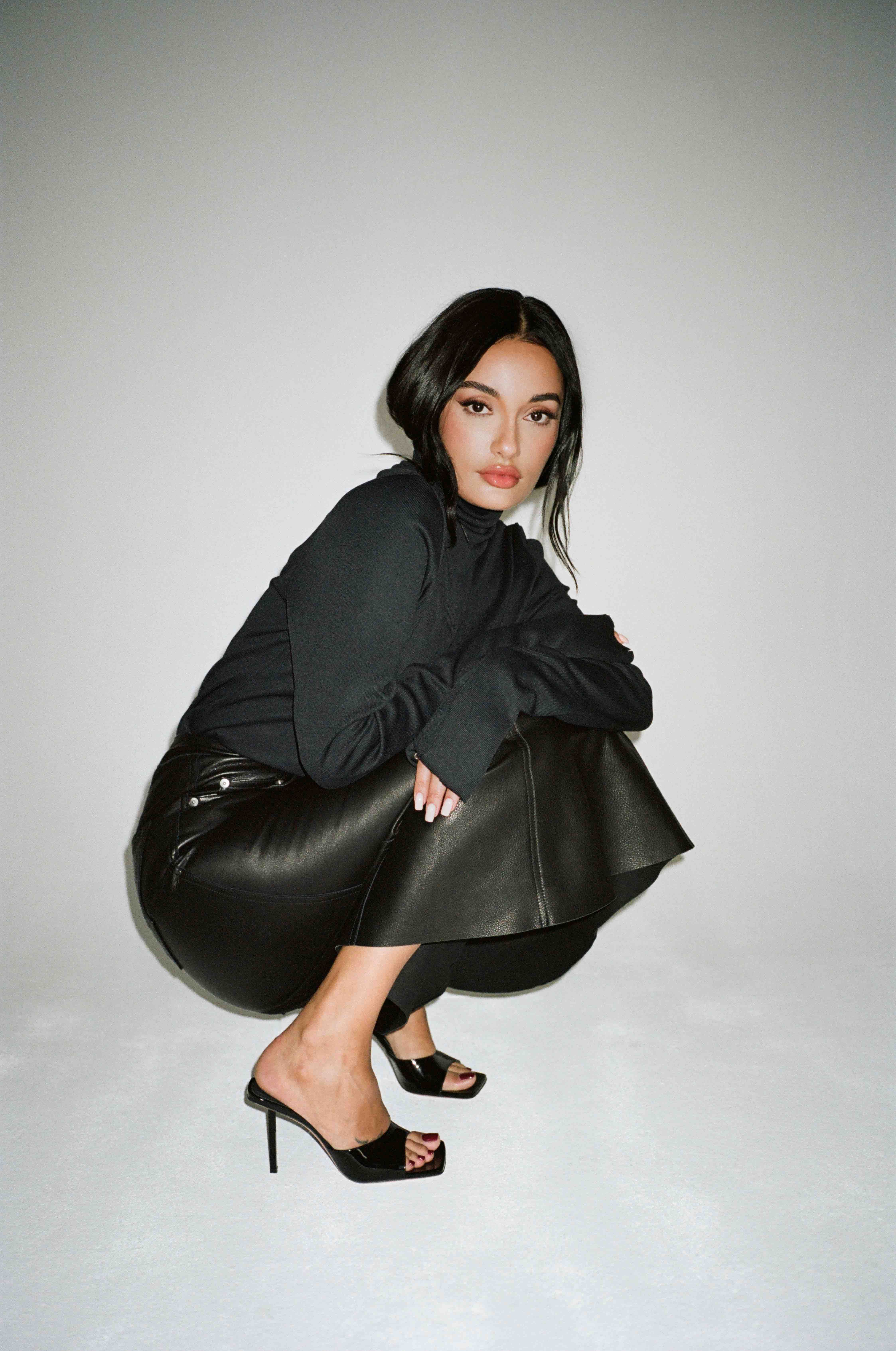
BW: I love that. Speak to me about Harrods. Your new space in there looks epic.
AM: My first kind of dip into retail. It’s the first time I had to deal with designing uniforms, receipt holders, and shopping bags. I took care of the design parts down to the smallest details. It was such a great experience and a way to flirt with retail, but with having the expertise of Harrods. And working with my architect on the design of the store. And it’s been a long time coming, we waited until they gave us the right space. They don’t usually offer spaces like that to brands that are not heritage brands. So that’s another moment where we just wanted to wait until we were in the right position.
BW: Absolutely. So, what’s next? Bigger bags, more jewelry, retail.
AM: Yes, I really enjoy doing jewelry. I really think that shoes are jewelry for the feet. Then I want to structure the company so that I can focus more on the creative side, because I also run the business, which is a bit complex. It’s very hard. Also, you cannot be the best at everything. As an entrepreneur, you want to leave space for someone who has better knowledge or better experience than you in certain environments. Right? Because you can’t be the CEO, CMO, and creative director. You can wear all the hats you can, but you’re not going to do any at the right level. The main priority is also to continue structuring the company and to do more hires and just be able to perform on a high level on the market.
I think it’s super important to not lose the spark. If you don’t do what the market says, you dictate what the market will want.
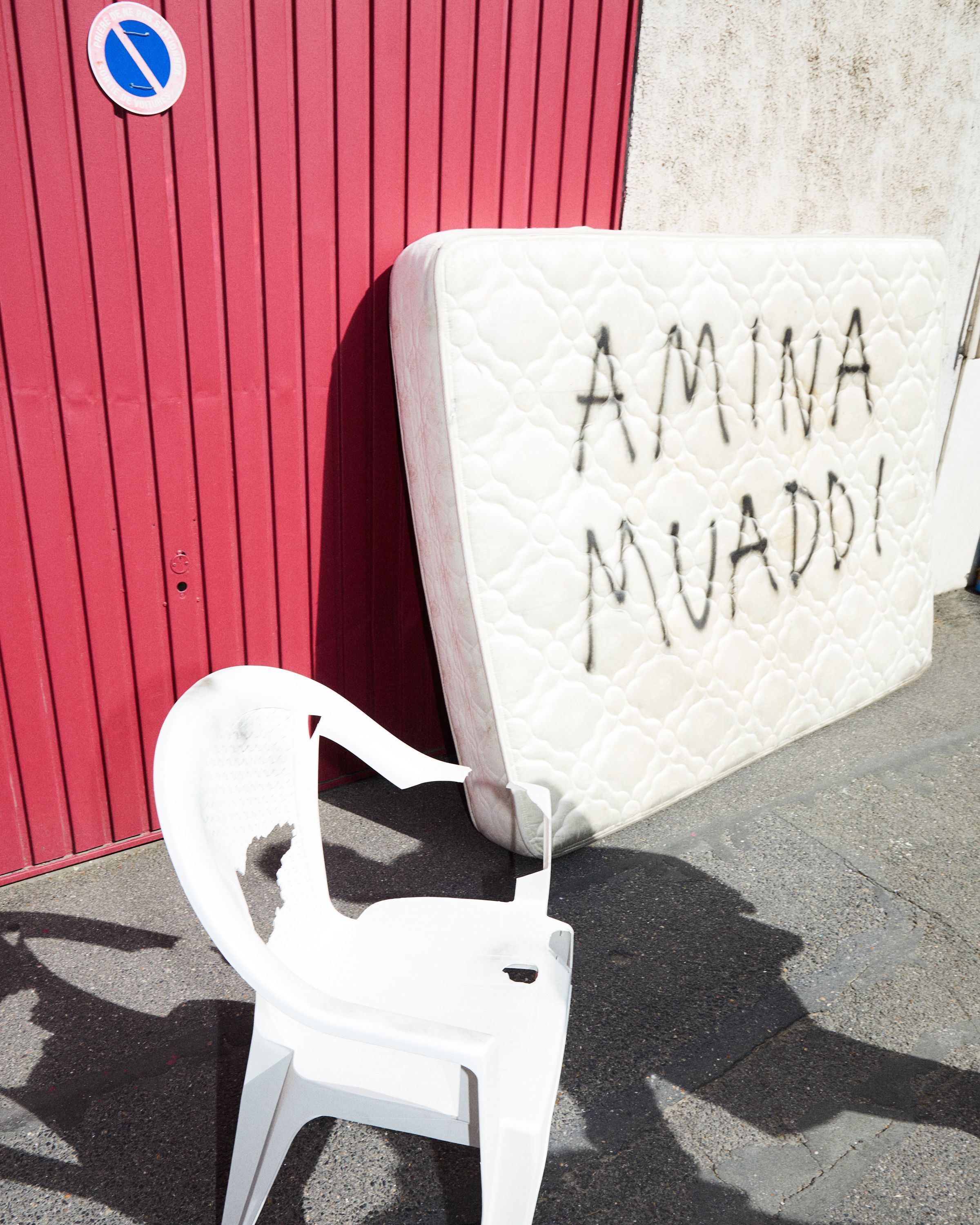
Credits
- Text: Brenda Weischer
